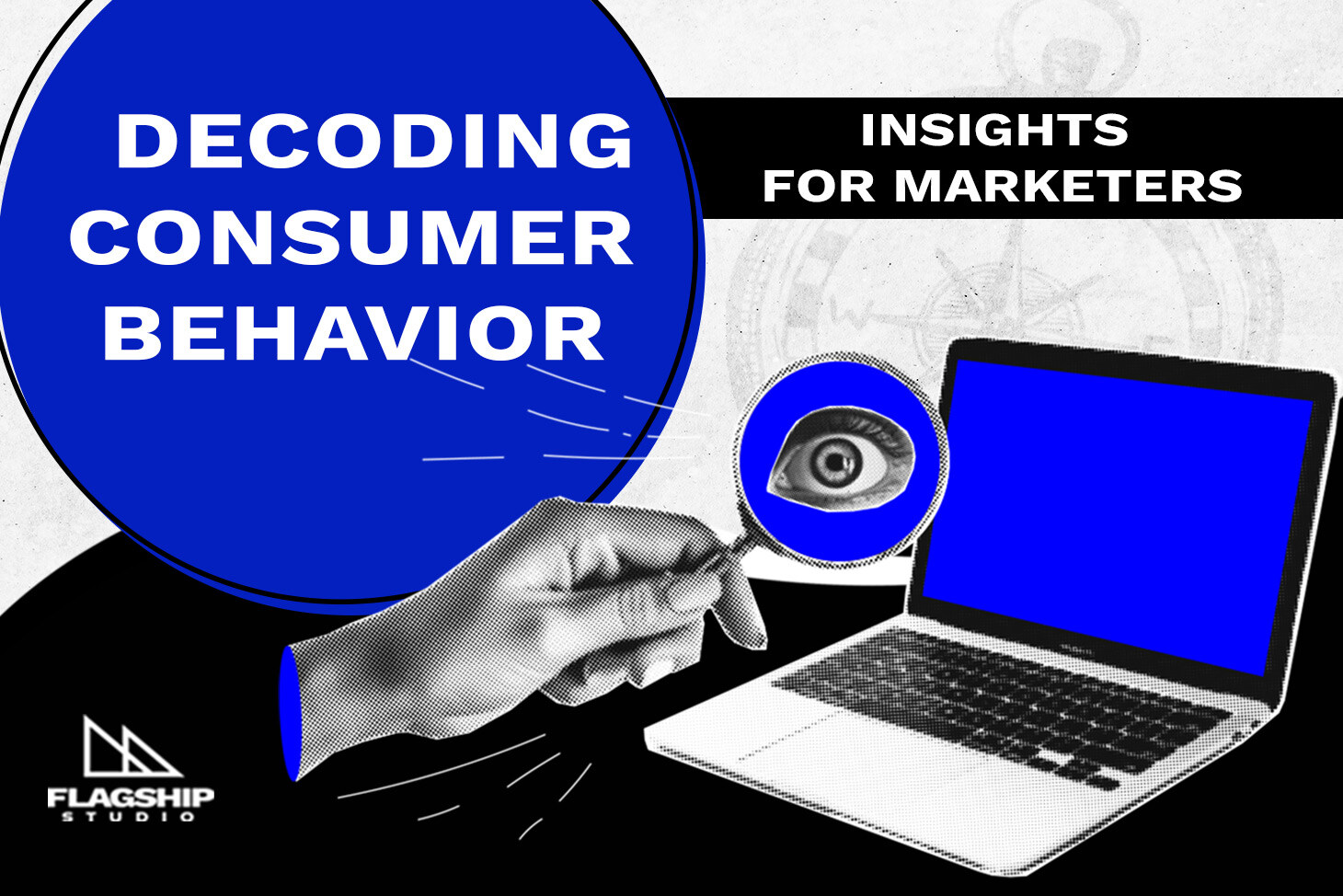Have you ever wondered why some products fly off the shelves while others gather dust? Why do people wait in line for hours for a new gadget, yet hesitate to spend on something essential? The answers lie in the fascinating realm of consumer behavior—a blend of psychology, sociology, and economics that holds the key to unlocking purchasing patterns. In this Flagship Studio blog, we’ll take a deep dive into what drives consumer decisions and how marketers can leverage these insights to craft powerful campaigns. Get ready to decode the "why" behind the buy!
What Is Consumer Behavior?
At its core, consumer behavior is the study of how individuals or groups choose, buy, use, and dispose of goods, services, or experiences. It’s not just about what people purchase, but also why, where, when, and how they do it. Every click, scroll, and "add to cart" action says something about a consumer’s needs, values, and priorities.
Understanding consumer behavior isn’t just a nice-to-have skill for marketers—it’s essential. It’s like being able to read the minds of your audience, uncovering the motivations that drive their actions. When you understand the underlying factors behind a consumer's decision-making process, you can align your marketing strategies to meet their expectations and needs better than your competitors.
The 5 Key Factors That Influence Consumer Behavior
Personal Preferences
Consumers are deeply influenced by who they are—age, gender, occupation, lifestyle, and values. For example, younger generations are drawn to brands that advocate for social causes, while older generations look for practicality and trust.
Social Proof & Influence
Ever bought something because everyone else seemed to love it? Social proof—like reviews, testimonials, or influencer endorsements—plays a powerful role in decision-making. Humans are naturally drawn to follow the crowd.
Psychological Drivers
Our emotions, attitudes, and perceptions affect every decision. Fear of missing out (FOMO), nostalgia, or even stress can drive certain purchases. The next time you see "limited-time offer," recognize the tactic for what it is—playing on urgency and exclusivity.
Cultural Impact
Cultural trends and beliefs significantly influence consumer choices. For instance, sustainability has become a cultural movement, prompting eco-conscious buying. Consumers now favor brands that are transparent and align with their values.
Economic Context
Purchasing power is key. A luxury brand might struggle in an economic downturn, while more affordable "dupe" products soar. The money in consumers’ wallets often dictates their decision-making framework.
Insights Marketers Can Use to Decode Consumer Behavior
Decoding consumer behavior isn’t about guessing—it’s about gathering and analyzing data creatively and strategically. Here’s how you can do it:
Master the Art of Listening
Market research, surveys, and focus groups are great starting points. But don’t underestimate the power of listening on social media. Look for key themes in comments, threads, or reviews to figure out what excites or frustrates your audience.
Example: When fast-food chain Wendy's noticed their fans engaging with their Twitter roast sessions, they doubled down and used witty responses and clapbacks as part of their social strategy. The result? Increased brand engagement and sales.
Track the Customer Journey
Every customer is on a path, and your job is to understand their touchpoints. Did they first find you on Instagram? Or, were they referred by a customer review? Mapping their behavior helps you identify gaps and opportunities to convert interest into loyalty.
Pro Tip: Use tools like heatmaps to track how users interact with your website. It shows where they click, linger, or drop off.
The Power of Personalization
It’s no longer enough to market to everyone—it’s about speaking directly to one individual out of thousands. People want to feel seen and appreciated, and personalization is the ultimate way to do this. Leverage customer data to tailor experiences.
Example: Netflix’s recommendation engine doesn’t just help users—it’s a masterstroke in personalization. By suggesting what you might want to watch based on past behavior, it keeps viewers hooked.
Anticipate Needs and Trends
Predicting consumer behavior isn’t magic; it’s reading patterns. For example, if you notice an uptick in searches for reusable water bottles, a trend toward sustainability might be brewing. Stay ahead by anticipating where consumer interest is heading.
Example: During the pandemic, companies like Zoom capitalized on the sudden shift to remote work, perfectly aligning their messaging to meet this new demand.
Experiment & Adapt
Testing different messaging or ad formats is a great way to gauge reactions. A/B testing your email subject lines, running experimental social campaigns, or trying new storytelling formats can uncover surprising insights about your audience.
Challenges in Understanding Consumer Behavior
While it sounds thrilling, decoding consumer behavior has its challenges. People are unpredictable. Their decisions may be influenced by external factors we have no control over, like changes in trends, world events, or emotional states. Additionally, balancing data collection with privacy is more crucial than ever.
Conclusion
Understanding consumer behavior is a blend of art and science. It requires empathetic observation, analytical skills, and creativity. By truly connecting with what drives buying decisions, marketers can create campaigns that don’t just sell but resonate. Whether you’re decoding the mystery behind purchases or planning your next big move, we hope you’ve found this blog useful. Good luck!

